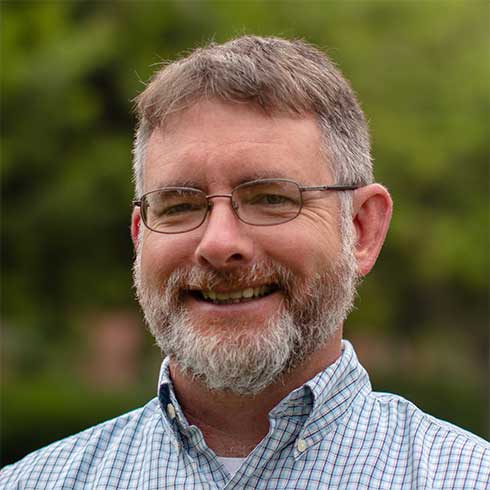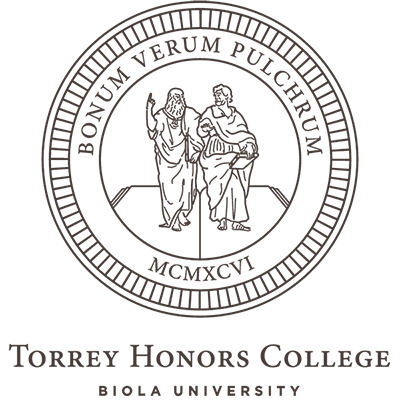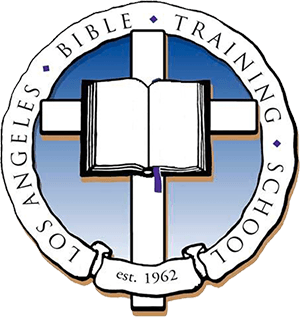A scene from The Canterbury Psalter (12th century)
Blog
Easy Trinity, Hard Trinity
There’s a kind of back and forth involved in teaching about the triune God. You have to be able to state the doctrine briefly, but be prepared to unfold it at greater length. The brief and easy statement needs to be clear and satisfying, and then the longer statement needs to not contradict the brief one. I find this back and forth movement throughout the Christian tradition, and though I’ll illustrate it by looking at the Heidelberg Catechism, I could also have used examples from the fourth, fifth, or thirteenth centuries. But it’s a movement of thought often missing in current conversations about the Trinity. Here’s the example: Question 24 of the Heidelberg Catechism asks how the three articles of the Apostles’ Creed are divided, and answers: Into three parts:God the Father and our creation;God the Son and our deliverance;God the Holy Spirit and…
Reading a Nativity Image
Let’s look at a nativity image. Around Christmas, you see birth-of-Christ imagery of all kinds, simplified or elaborated with a variety of details and variations. Things are left out, things are patched in. And even if you search the early centuries of the Christian visual tradition for the first nativity images, you find a lot of variation (magi took an early lead over shepherds, for instance). Nativity images are a kind of placeholder for layers and layers of interpretive meditation. Any particular one you happen to see probably contains selections from a wonderfully expansive tradition of visual interpretation of the meaning of Christ’s birth. To see the full range of visual interpretation, you could study one of the more cluttered icons from the elaborate Byzantine tradition. But my personal favorite is the extremely bookish and highly verbal tradition known as the Biblia Pauperum. Take…
Journey of the Word (Lessons between Carols)
1. Genesis 3: God Promises a Redeemer In the beginning, two trees stood in the midst of the garden. There was the tree of life, and there was the tree of knowledge, and they just made sense. They grew side by side, and self-evidently belonged together. The LORD God planted them there as a dual blessing in a world of blessedness, a match made in paradise. But now nobody remembers how they were ever supposed to go together, because Adam and Eve took them apart… and lost the instructions. Whatever else the LORD God had said about the two trees, he had definitely commanded Adam not to eat from the tree of knowledge of good and evil. That prohibition was holy and righteous, but our first parents called it into question. Their ears had heard the holy word that walked among the ancient trees,…
Benefits of Faith in the Trinity
“What benefits do we receive” from believing each doctrine we believe, asks the Heidelberg Catechism. This recurring question about benefits is a hallmark of the catechism, inviting the reader not to stop at mere affirmation, but to press on and embrace the practical results and the appropriate comfort that follow from faith. “What fruits do we derive,” “what comfort do we find,” and so on. But when the Catechism comes to faith in the Trinity (questions 24 and 25), it does not raise this question. Why not? We don’t know; it doesn’t say. Perhaps the author, confident that his exposition of the persons of the Father (Q. 26-28), Son (Q. 29-52), and Holy Spirit (Q. 53 and following) was adequately focused on practical application, decided to hold his fire on the Trinity question itself. There can be, after all, something impertinent in asking “what’s…
Parergon Management
Sometimes when you’re working on a big project, you find yourself spinning off, almost by accident, little sub-projects. These can be of various kinds: some are distracting sidelines; some are sub-sections that are fine but just don’t fit the flow of thought; some are ideas that develop their own heft and center of gravity and just spin away. There’s a word for those little excrescences in your productivity: they (plural) are parerga, or each of them is a parergon. A little by-work, that developed alongside the large, main work. People used to use this word in literary or artistic contexts: if Michelangelo made a small painting while working out ideas for the Sistine Chapel ceiling, you would call that little stand-alone painting a parergon of the big project. So it’s different from a preliminary sketch, because sketches are practice for the main work. A…
Euthalian Ephesians
I’ve been pondering the section divisions within Ephesians. A lot of the book falls easily into obvious units of a dozen or so verses, two of which together make a chapter. There’s not much disagreement about where those chapter breaks ought to happen, and our standard, six-chapter division of Ephesians makes pretty good sense (though the chapters run to very different lengths). But if you wanted to shake up our standard approach to chapter divisions, here’s an older option. The earliest witnesses we have to somebody’s division of Ephesians into chapters is in the Euthalian Apparatus, an ancient set of reader’s textual aids dating back to perhaps the fourth century (Wikipedia entry here; De Gruyter book here). The Euthalian Apparatus breaks Ephesians down into ten chapters: From Vermund Blomkvist, Euthalian Traditions: Text, Translation and Commentary (DeGruyter, 2012), 51. There are several interesting things going…
Holy Spirit, Holy Ghost
“What’s the difference between the Holy Spirit & the Holy Ghost?” This is the most surprising question I get, doing interviews since publishing a book on the third person of the Trinity. It comes up often in Q&A! People want to know, so I figured I’d answer it here on Halloween. There’s no difference; same person. So why do we have two expressions? A quick answer is that “ghost” is a more old-fashioned English word for “spirit.” So if you’re reading an older English translation (KJV & company), or singing or reciting anything based on it, you’ll be comfortable saying “Holy Ghost.” Meanwhile, English changes, & “ghost” long ago stopped meaning “spiritual” in general usage. It now mainly suggests an apparition of the dead. So recent translations (Revised Version 1885 on) mostly say “Holy Spirit.” Less explaining, less spooky, still faithful to the original….
Philanthropia (Williams, 1665)
Paul prays (Eph 3:19) for believers “to know the love of Christ that surpasses knowledge.” This “orthodox paradox” is the subject of a 1665 book by a Puritan named Peter Williams (1625-1680), with the title Φιλανθρωπια [philanthropia], or the Transcendency of Christs Love Towards the Children of Men. (Google Books scan is not uniformly legible; EEBO TCP text has some significant gaps and gaffes.) It’s a 275-page expansion of the theme, and though it starts with quite detailed exposition (even text-critical considerations), it spreads out into a survey that includes doctrinal theology and (what we would now call) biblical theology. This is Williams’ first book, and he is eager to quote from respected sources. His range of reading is impressive, the quotations are usually aptly chosen, and those other voices that he channels (in the main text or the packed margins) must make up half…
The Doctrine of the Spirit in Classical Mode
With a little over a hundred and fifty pages to introduce the doctrine of the Holy Spirit at a non-technical level, I knew my main goal: I wanted to write the most utterly trinitarian book on the Spirit available for a wide audience. Of course I want everybody who reads the book to get exactly the specific doctrine promised in the title, but also to get a good helping of the comprehensive doctrinal framework around it. So I framed the doctrine of the Holy Spirit securely within the doctrine of the Trinity, even making that framing memorably conspicuous in the table of contents: I think the book is about 20 pages longer than I had originally hoped. The series Short Studies in Systematic Theology has the word Short right there on the cover, so it needs to keep the promise. But those extra 20…
Brad East’s Review of Fountain of Salvation
I was glad to see a review of my 2021 academic book Fountain of Salvation: Trinity & Soteriology appear in one of the liveliest of theological journals, Pro Ecclesia; even more glad to see the review is by Brad East, a keen-eyed observer well worth hearing from; and even even more more glad glad to find the review so very positive about my work. But beyond those gratifying (to me) elements of the reading experience, I think it’s the best book review one of my books has received because by the end it definitely rises to the level of talking not just about the book, but about the very things the book talks about: Trinity and salvation. Brad does some careful observation and description of my work, locates it among some other recent studies, and then ends the review with the suggestion that the…
Synopsis of a Purer Pneumatology, Too
The Synopsis of a Purer Theology (Leiden, 1625) is one of the most satisfying products of Protestant Scholasticism. It’s now available in English, and soon in paperback (Davenant, 2023). So there will be no excuse for being ignorant of the excellent argumentation in these rigorous disputations. I want to post a few excerpts from Disputation 9, on the person of the Holy Spirit, mainly because I wish this solid and vigorous Protestant pneumatology was more widely known. But another reason I want to share it because in my recent work on the Holy Spirit, I followed the guidance of the Synopsis’ treatment of the Spirit quite closely, but only cited the work once. So it’s not as visible in my footnotes as I wish I had made it. To compensate, here are a few of the most significant moves from the Synopsis: First, the…
When Did He Come Preach Peace?
Ephesians 2:17 says that Christ “came and preached peace to you who were far off and peace to those who were near.” (ἐλθὼν εὐηγγελίσατο εἰρήνην ὑμῖν τοῖς μακρὰν καὶ εἰρήνην τοῖς ἐγγύς) It’s a powerful statement, especially following the previous statements that Christ in person “is our peace” (2:14) and “made peace” (2:15). The sequence of being, making, and proclaiming peace certainly positions Christ as the prince of peace in what he is, does, and announces. Leaning in a little closer, commentators rightly ask: when? When did Christ come and preach peace to Gentile (“far off)” and Jew (“near”)? It’s a great question, and has produced some excellent commentary. In this post, I just want to relay a brief survey of as many interpretations as I can. They are gathered in Ernest Best’s 1998 ICC commentary, 271-273. Best provides sources for each view, identifying previous commentators who have championed them….
Recommended Reading on the Holy Spirit
If you were to ask me, this week, what book you should read about the Holy Spirit, I would assume you were messing with me. Because I just now published one and am very excited about it. So pardon my authorial pride, but right now my own book, The Holy Spirit: An Introduction, would absolutely be the first thing to pop into my mind. But if you were to ask me at any other time (like last year or next year), I’d surely tell you about the standards, my own favorites, and the sources I reach for when I think about pneumatology. As a matter of fact, at the end of my book (third link’s the charm, go get it), I provide an annotated list of eleven sources I recommend for further reading. Here they are: Special bonus: These next six books didn’t make…
An Excellent Syn-Thesis
You could work out an entire theology of salvation just by collating the ways Paul puts the prepositional prefix syn- onto a variety of words, making a compact with- or co- construction to carry his doctrine. In fact, I was on the verge of sketching out such a soteriology (based especially on Ephesians), when I found that somebody had already done a great job of it back in 1952. Brendan McGrath, O.S.B. wrote a seven-page survey article on all the syn-compounds in Paul, which he concluded by syn-thesizing into a syn-optic final paragraph. Check it out: Brendan McGrath, “‘Syn’ Words in Saint Paul,” The Catholic Biblical Quarterly , July, 1952, Vol. 14, No. 3 (July, 1952), pp. 219-226; at 225-6. JSTOR link. The paragraph spans a page break, so I spliced them together here for better viewing. This paragraph is not only a marvel…
How to Have Already Met the Holy Spirit
In the first chapter of The Holy Spirit: An Introduction, I describe how “the overall pattern of scriptural revelation is that the Holy Spirit’s presence becomes clear at the end of the process but then turns out to have always already been there.” The spiritual point is that we never quite get “introduced” to the Holy Spirit as a total stranger, but as someone who has already been present to us and active on us. When he opens our minds to his presence, we may feel deep things stirring within our hearts, bringing up half-remembered glimpses and partial awareness that Something or Someone has been with us for some time. Here’s one way I say it in the book: He sometimes seems to us to be introduced late, like some kind of an afterthought. But God has no afterthoughts. What he apparently has is…
Relax, You’re Probably Not Binitarian
As I was reading widely in preparation for writing a book about the Holy Spirit, I kept coming across a lament (an accusation?) that many Christians are guilty of forgetting, ignoring, or failing to adequately honor, the Spirit. And my own experience, after months of studying pneumatology, was that there certainly were great treasures stored up here in this doctrine, and that more people should spend more time with them. Though the time had come to finish the book and send it to the publisher, I felt like I wasn’t anywhere near finished learning about, and paying close attention to, God the Holy Spirit. But especially at the popular level, it started to seem like 90% of the books I read about the Holy Spirit kept up the same lament: “Alas, alas, most Christians ignore the Holy Spirit! We are so awful, shame on…
Crescentia Syndrome and the Holy Spirit in Person
Once upon a time, a Franciscan nun named Crescentia (full name: Maria Crescentia Höss of Kaufbeuren, 1682–1744) had a vision. “The Holy Spirit appeared to her in the guise of a youth clad in a gown and a cloak as white as snow, with bare head and curly hair and with seven flames or fiery tongues hovering around his head.”1 Wow! Crescentia and her monastic superiors sent for a painter, to whom Crescentia carefully described her vision. Under the close guidance of the visionary herself, the painter produced an impressive image that became popular among the nuns and, soon, the surrounding community. Here’s a version of the painting. There’s the lovely young man, presenting himself and his glory, surrounded by beams of light, tongues of flame, and a shining halo. But those golden-light phenomena are just what we would expect from any purported vision…
Polytropos
Here’s a handout I use with undergrads who are reading Homer’s Odyssey at the beginning of the semester, and will read the book of Hebrews at the end. It just puts interlinear versions of the two books’ opening lines side by side, so we English-reading students can consider the coincidence that a neat word, polytropos, occurs early in both works. It really ties the semester together. These word-for-word translations show the tension: Odysseus is a man of “many turns,” but God spoke to the Fathers “in many ways.” We would hardly want to confuse the wiliness of Odysseus with the biblical God’s providential guidance of salvation history. Same word, different works. But the word polytropos is worth lingering over, especially if you’ve got both books open in front of you. A Homer commentary describes πολύτροπον as an “epithet of Odysseus” that occurs only here…
About This Blog

Notes, quotes, thoughts, trial balloons, reviews, Twitter threads that turned out okay, position papers, miscellanies. Lightly edited theology writing from Fred Sanders.


